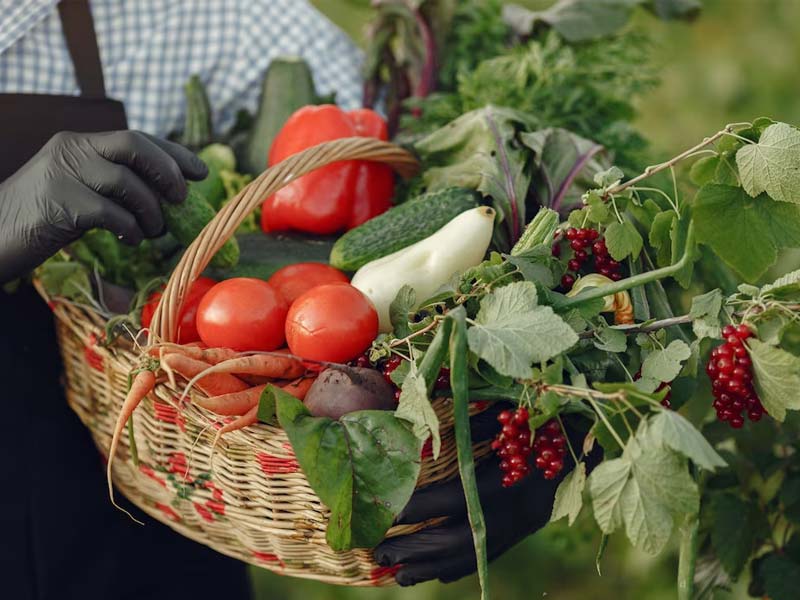In the realm of gardening, where the past intertwines with the present, the concept of an Heirloom Vegetable Garden stands as a testament to the rich heritage of culinary diversity. As you embark on this horticultural journey, you’ll delve into a world where history and flavor merge, yielding an array of produce that tells stories of generations past.
An Heirloom Vegetable Garden is not merely a plot of land adorned with plants; it’s a canvas on which time-honored varieties paint a tapestry of tastes that reflect the essence of bygone eras. Here, the seeds of tradition sprout into vibrant plants, and the fruits they bear become a celebration of the legacy that has been lovingly preserved.
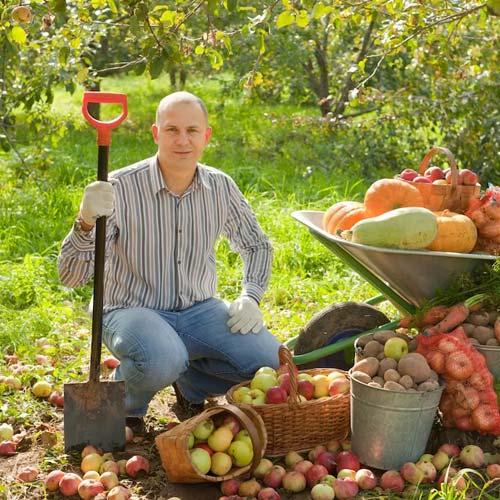
The allure of an Heirloom Vegetable Garden lies not only in the vibrant colors and robust flavors it produces but also in the sense of connection it fosters with history. In a world where modernity often takes center stage, tending to heirloom plants offers a chance to step back in time and cultivate a piece of our culinary heritage.
The term “heirloom” itself suggests something passed down through generations, a living link between our ancestors and ourselves. As you carefully nurture these time-honored seeds, you contribute to the preservation of rare and unique plant varieties that might otherwise fade into obscurity. An Heirloom Vegetable Garden, with its carefully chosen array of plants, becomes a living tribute to the flavors and stories of the past, inviting you to savor the tastes that have endured the test of time.
In recent years, there has been a resurgence of interest in heirloom vegetables and the art of cultivating them in home gardens. Heirloom vegetables are an essential part of our agricultural heritage, representing the time-tested varieties that have been passed down through generations. Unlike modern hybrids, these vegetables boast unique flavors, diverse colors, and a rich history, making them a favorite among gardening enthusiasts and food connoisseurs alike.
In this comprehensive guide, we will explore the fascinating world of heirloom vegetables and provide you with valuable tips to start and maintain your own heirloom vegetable garden. From choosing the right seeds to preserving these treasured varieties for future generations, we will cover everything you need to know to create a thriving heirloom garden of your own.
1. Understanding Heirloom Vegetables
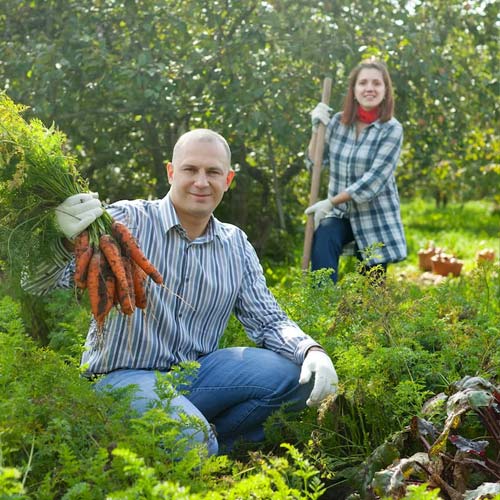
Heirloom vegetables are open-pollinated plant varieties that have been preserved and handed down for at least 50 years. These seeds are typically passed down through families or communities and have a story to tell about their origins and significance. They are open-pollinated, meaning they rely on natural pollination by wind, insects, or other means rather than human intervention. This natural process leads to the preservation of unique characteristics that distinguish heirlooms from modern hybrids.
One of the most remarkable aspects of heirloom vegetables is their incredible diversity. You can find a vast array of heirloom tomato varieties in all shapes, sizes, and colors, ranging from the sweet, golden-yellow “Aunt Ruby’s German Green” to the dark and meaty “Black Krim.” Likewise, heirloom beans, peppers, cucumbers, and other vegetables each have their unique qualities, making them an exciting choice for any gardener. Enhance Your Culinary Experience with an Heirloom Vegetable Garden. Discover the Beauty and Flavor of an Heirloom Vegetable Garden.
2. Why Choose Heirloom Vegetables?
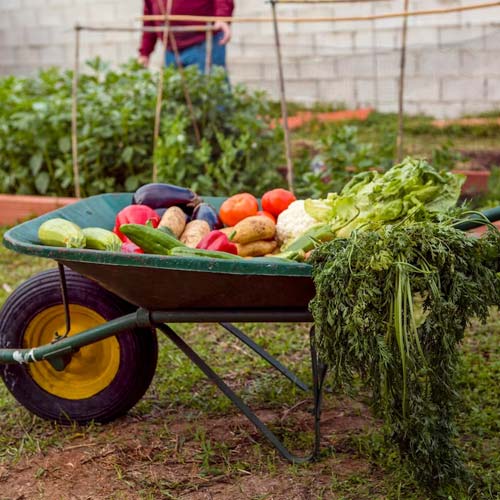
The growing popularity of heirloom vegetables is not just a passing trend; it’s rooted in several compelling reasons:
- Flavor and Taste: Heirloom vegetables are renowned for their outstanding flavor and taste. Unlike some modern hybrids, which prioritize attributes like uniformity and shelf life, heirlooms emphasize the essence of each variety, delighting the palate with rich, robust, and nuanced flavors.
- Biodiversity: Cultivating heirloom vegetables encourages biodiversity in our food systems. By growing a wide variety of heirlooms, gardeners contribute to preserving genetic diversity and reducing the risk of crop failure due to diseases or environmental changes.
- Historical and Cultural Significance: Each heirloom variety has its own story, often linked to specific regions, cultures, or families. Growing these vegetables connects us to our agricultural heritage and the traditional knowledge of past generations.
- Adaptability and Resilience: Heirloom vegetables have stood the test of time, adapting to various climates and growing conditions. They often exhibit greater resilience and self-sufficiency compared to some modern hybrids that rely heavily on chemical inputs.
- Seed Saving: One of the most gratifying aspects of heirloom gardening is the opportunity to save and share seeds. By doing so, you actively participate in preserving these precious varieties for future generations. Nurturing an Heirloom Vegetable Garden: A Labor of Love. Tips for Creating Your Own Heirloom Vegetable Garden Oasis.
3. Planning Your Heirloom Garden
Preserving Biodiversity: The Importance of an Heirloom Vegetable Garden. Unlock the Rich History of Flavors with an Heirloom Vegetable Garden. Before diving into the joys of planting and cultivating heirloom vegetables, it’s essential to plan your garden thoughtfully. Here are some key steps to help you get started:
- Assess Your Space: Take a good look at the available space in your garden. Whether you have a large backyard or just a small patio, there are heirloom vegetables suitable for almost any environment. Consider factors such as sunlight exposure, soil quality, and potential obstacles like trees or buildings.
- Choose the Right Varieties: The variety selection process can be both exciting and overwhelming due to the vast number of heirloom vegetables available. Research and identify the vegetables that will thrive in your climate and growing conditions. Make a list of your favorite heirlooms, and don’t hesitate to try some new ones too!
- Companion Planting: Companion planting is an age-old practice that involves planting compatible crops together to maximize their growth potential and repel pests naturally. Integrating companion planting techniques in your garden will lead to healthier plants and a more balanced ecosystem.
- Succession Planting: Consider implementing succession planting to extend your harvest season. Succession planting involves sowing new seeds or transplanting seedlings at regular intervals, ensuring a continuous supply of fresh produce throughout the growing season.
- Garden Layout: Plan your garden layout strategically to optimize space and resources. Group plants with similar water and sunlight requirements together. Consider using raised beds, vertical gardening techniques, or container gardening to maximize space utilization.
4. Sourcing Heirloom Seeds
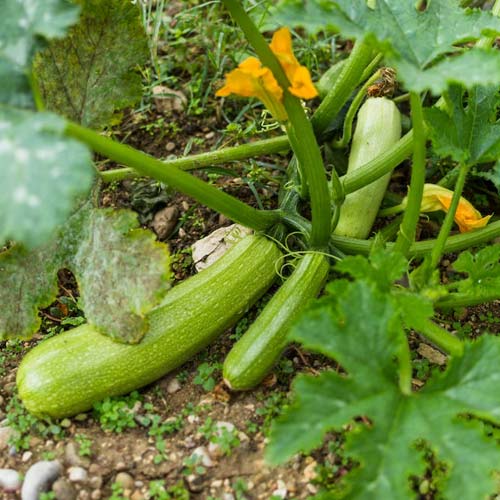
The Allure of Heirloom Vegetable Gardens: A True Gastronomic Adventure. Elevate Your Garden to New Heights with an Heirloom Vegetable Garden. Once you have your garden plan in place, it’s time to acquire heirloom seeds. The quality of seeds you choose plays a crucial role in the success of your garden. Here’s how to find and select the best heirloom seeds:
- Local Seed Exchanges: Check for local seed exchanges, farmers’ markets, or gardening clubs in your area. These events often provide an excellent opportunity to connect with fellow gardeners and obtain heirloom seeds well-suited to your region.
- Online Seed Banks: There are numerous online seed banks specializing in heirloom varieties. Look for reputable sources that offer a wide selection and provide detailed information about each variety.
- Seed Saving Networks: Some communities or organizations have established seed-saving networks to promote heirloom preservation. Engaging with these networks allows you to exchange seeds and knowledge with like-minded individuals.
- Seed Catalogs: Many seed companies produce catalogs that showcase their heirloom offerings. These catalogs often include valuable growing tips and historical information about each variety. You can read Corn Chowder.
- Start Your Own Seed Bank: As you become more experienced with heirloom gardening, consider saving your own seeds to create your personal seed bank. Remember that proper seed saving techniques are essential to maintaining the purity and vigor of heirloom varieties. Embark on a Journey of Taste with Your Own Heirloom Vegetable Garden. A Guide to Planning and Planting Your Perfect Heirloom Vegetable Garden.
5. Preparing the Soil
The Charm of Antiquity: Cultivating an Heirloom Vegetable Garden. Unveiling the Secrets of a Thriving Heirloom Vegetable Garden. The foundation of a successful heirloom vegetable garden lies in healthy, fertile soil. Proper soil preparation is essential for robust plant growth and high yields. Follow these steps to get your soil ready:
- Soil Testing: Begin by conducting a soil test to determine its pH level and nutrient content. Many agricultural extension offices offer soil testing services, or you can purchase DIY soil testing kits.
- Soil Amendments: Based on the soil test results, amend the soil with the necessary nutrients. Organic matter such as compost, well-rotted manure, and leaf mold can significantly improve soil structure and fertility.
- Mulching: Mulch helps retain soil moisture, suppress weeds, and regulate soil temperature. Apply organic mulch like straw, wood chips, or shredded leaves around the plants, keeping it a few inches away from the plant stems.
- Raised Beds: If you have poor soil quality or drainage issues, consider using raised beds filled with a mix of topsoil, compost, and other amendments. Raised beds provide better control over soil conditions and prevent soil compaction.
- Crop Rotation: Implement a crop rotation plan to prevent soil depletion and reduce the risk of pest and disease buildup. Avoid planting the same family of vegetables in the same spot for consecutive growing seasons.
6. Planting and Care
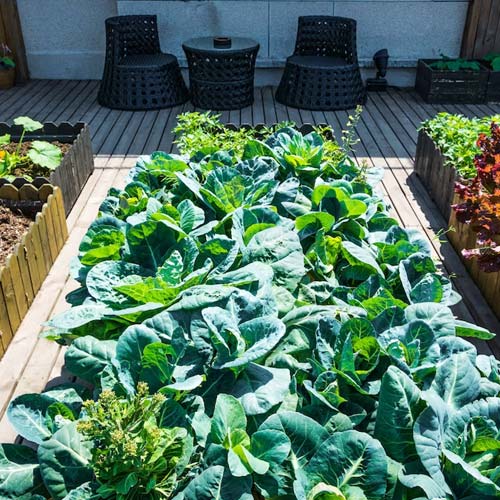
Harvesting Memories and Flavor: The Joys of an Heirloom Vegetable Garden. Savoring Nature’s Treasures in Your Own Heirloom Vegetable Garden. With your garden prepped and your heirloom seeds in hand, it’s time to start planting. Follow these tips to ensure a successful growing season:
- Timing: Heirloom vegetables have specific planting windows based on your location and climate. Follow a planting calendar suitable for your region, taking into account frost dates and the recommended planting time for each variety.
- Seed Starting: If you have a shorter growing season or challenging weather conditions, consider starting your seeds indoors. Use seed starting trays or small pots with high-quality seed-starting mix, and provide adequate light and warmth to promote healthy seedlings.
- Transplanting: When transplanting seedlings into the garden, handle them with care to avoid damaging the delicate roots. Water the seedlings well before transplanting, and avoid disturbing the root ball as much as possible.
- Watering: Adequate and consistent watering is crucial for healthy plant growth. Water the garden in the morning to allow excess moisture to evaporate during the day, reducing the risk of fungal diseases.
- Fertilization: Heirloom vegetables generally respond well to organic fertilizers. Use compost tea, fish emulsion, or other organic fertilizers to provide essential nutrients to your plants.
- Pest Management: Heirloom vegetables can be susceptible to pests, just like any other plants. Practice integrated pest management (IPM) techniques, such as handpicking pests, using beneficial insects, and applying natural pest deterrents to maintain a healthy balance.
- Support and Trellising: Some heirloom vegetables, like tomatoes, cucumbers, and pole beans, benefit from support and trellising. These structures help keep the plants off the ground, improving air circulation and reducing the risk of disease.
- Weeding: Tending to the Past: The Art of Growing an Heirloom Vegetable Garden. Regularly remove weeds from your garden to minimize competition for nutrients and water. Mulching can also help suppress weed growth. You can read rogan josh.
7. Harvesting and Seed Saving
Culinary Diversity at Its Best: Exploring the World of Heirloom Vegetable Gardens. The joy of heirloom gardening reaches its peak when it’s time to harvest your beautiful produce. Harvesting heirloom vegetables at the right time ensures peak flavor and quality. Additionally, seed saving allows you to continue the cycle of heirloom preservation. Follow these steps for harvesting and saving heirloom seeds:
- Harvesting Tips: Different vegetables have specific harvesting criteria. For example, tomatoes are best when fully ripe on the vine, while beans and peas should be harvested before they become too mature and fibrous. Regularly check the maturity of your vegetables and pick them at their peak.
- Seed Selection: When saving seeds, choose the healthiest and most vigorous plants from your garden. Avoid saving seeds from plants displaying signs of disease or poor growth.
- Seed Extraction: Extracting seeds from fruits like tomatoes, cucumbers, and peppers requires specific techniques. For instance, tomato seeds need to be fermented to remove the gel-like coating. Research the seed-saving process for each vegetable to ensure successful extraction.
- Drying and Storage: Once seeds are extracted, dry them thoroughly to prevent mold and rot. Properly label and store the seeds in a cool, dark, and dry place. If stored correctly, heirloom seeds can remain viable for several years. You can read Palak Paneer.
8. Preserving Heirloom Varieties for Future Generations
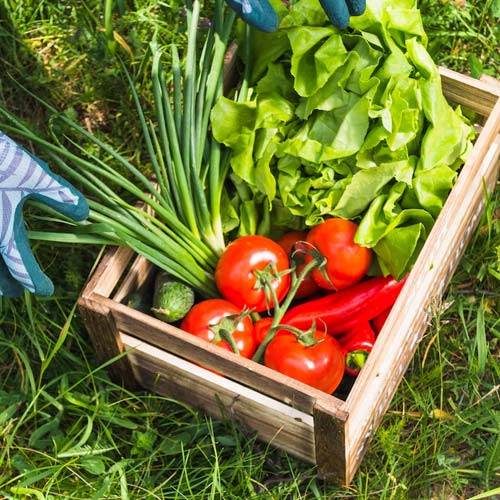
Enriching Your Table: The Rewards of an Heirloom Vegetable Garden. As a steward of heirloom vegetables, you have a vital role in preserving these treasured varieties for future generations. Here are some additional steps you can take to contribute to the conservation of heirlooms:
- Seed Exchanges and Swaps: Participate in seed exchanges and swaps to share your heirloom seeds with other gardeners. This not only expands your collection but also helps ensure the continuity of heirloom varieties.
- Documenting Family Histories: If you have heirloom vegetable varieties that have been in your family for generations, document their history and significance. Recording the stories behind these vegetables adds a personal touch to their preservation.
- Educating Others: Share your knowledge and passion for heirloom gardening with others. Organize workshops, webinars, or local events to educate people about the importance of heirloom preservation and the joy of growing these unique vegetables.
- Supporting Heirloom Seed Companies: Support seed companies that prioritize heirloom varieties. By purchasing heirloom seeds from these companies, you encourage the continued production and availability of diverse heirloom vegetables.
Conclusion – Heirloom Vegetable Garden

A Tapestry of Flavors: The Palette of an Heirloom Vegetable Garden. Crafting a Symphony of Tastes with Your Heirloom Vegetable Garden. Creating and tending to an heirloom vegetable garden is not only a rewarding hobby but also a way to connect with our agricultural heritage and contribute to the preservation of genetic diversity. You can read Creative Edible Flower Dishes.
Through careful planning, seed selection, and cultivation practices, you can enjoy the flavors of the past and safeguard these treasured varieties for the generations to come. So, roll up your sleeves, dig into the soil, and embark on a journey to preserve the legacy of heirloom vegetables while savoring their exceptional tastes and stories. Happy heirloom gardening!
Heirloom Vegetable Garden Tips: FAQs
- What are Heirloom Vegetable Garden?
Heirloom vegetables are traditional plant varieties that have been passed down through generations. These unique varieties often have historical significance and distinct flavors.
- Why should I consider planting an heirloom vegetable garden?
Planting an heirloom vegetable garden allows you to preserve rare and diverse plant varieties, support biodiversity, and enjoy flavors that may be different from modern hybrids.
- Are heirloom vegetables more challenging to grow than modern hybrids?
Heirloom vegetables can be just as easy to grow as modern hybrids. Some may require specific care, but with proper attention, you can have a successful garden.
- How can I find heirloom vegetable seeds?
You can find heirloom vegetable seeds through specialized seed companies, local farmers’ markets, gardening clubs, and online seed exchanges.
- Are heirloom vegetables more nutritious than modern varieties?
Nutritional content varies among vegetables, regardless of whether they are heirloom or modern. The emphasis should be on growing and consuming a variety of vegetables for a balanced diet.
- Can I save seeds from heirloom vegetables?
Yes, one of the unique aspects of heirloom vegetables is their ability to produce seeds that can be saved and replanted in subsequent seasons.
- Are there specific growing conditions for heirloom vegetables?
Heirloom vegetables have diverse growing requirements. Research each variety to ensure you provide the appropriate soil, sunlight, and water conditions.
- Do heirloom vegetables attract more pests?
Pest susceptibility depends on the variety and local conditions. Implementing organic gardening practices can help minimize pest issues.
- How do I ensure proper pollination for heirloom vegetables?
Some heirloom vegetables require cross-pollination for seed production. Encourage pollinators like bees and butterflies by planting pollinator-friendly flowers nearby.
- Can I grow heirloom vegetables in containers?
Yes, many heirloom vegetables can be grown in containers, making them suitable for small spaces or urban gardens.
- Are there heirloom vegetables that are well-suited for beginners?
Yes, some heirloom varieties, like Black Krim tomatoes or Early Scarlet Globe radishes, are relatively easy for beginners to grow.
- What is the best way to maintain the authenticity of heirloom vegetables?
To maintain the authenticity of heirloom vegetables, avoid using synthetic pesticides or fertilizers and practice sustainable gardening methods.
- Can heirloom vegetables be grown year-round?
Heirloom vegetables have specific growing seasons based on their natural cycles. Some may be grown year-round in mild climates, while others are best suited for certain seasons.
- Do heirloom vegetables have unique flavors?
Yes, many heirloom vegetables have distinct flavors that can be more intense or different from modern hybrids.
- Are heirloom vegetables more expensive than conventional produce?
Heirloom seeds may be slightly more expensive initially, but the long-term benefits and preservation of rare varieties make them a valuable investment.
- Can I use heirloom vegetables for seed saving and trading?
Absolutely, seed saving and trading are integral to heirloom gardening, contributing to the conservation and exchange of these unique varieties.
- How can I learn more about growing heirloom vegetables?
Research gardening books, attend workshops, and connect with experienced gardeners to learn valuable tips and techniques for growing heirloom vegetables.
- Are heirloom vegetables suitable for organic gardening?
Yes, heirloom vegetables are well-suited for organic gardening practices due to their genetic diversity and compatibility with natural growing methods.
- Can I grow heirloom vegetables alongside modern hybrids?
Yes, you can grow heirloom and modern hybrid vegetables together. Just ensure their growing requirements and compatibility are considered.
- Where can I find heirloom vegetable recipes to showcase their flavors?
Many cookbooks, food blogs, and culinary websites feature recipes that highlight the unique flavors of heirloom vegetables, allowing you to savor their deliciousness in various dishes.
Please follow us on linkedin. You can learn all best canadian food recipes you can check our Culinary 1TouchFood Youtube and Telegram 1TouchFood page. Don’t forget Fighting Obesity Magazine and Radio Cooking.

